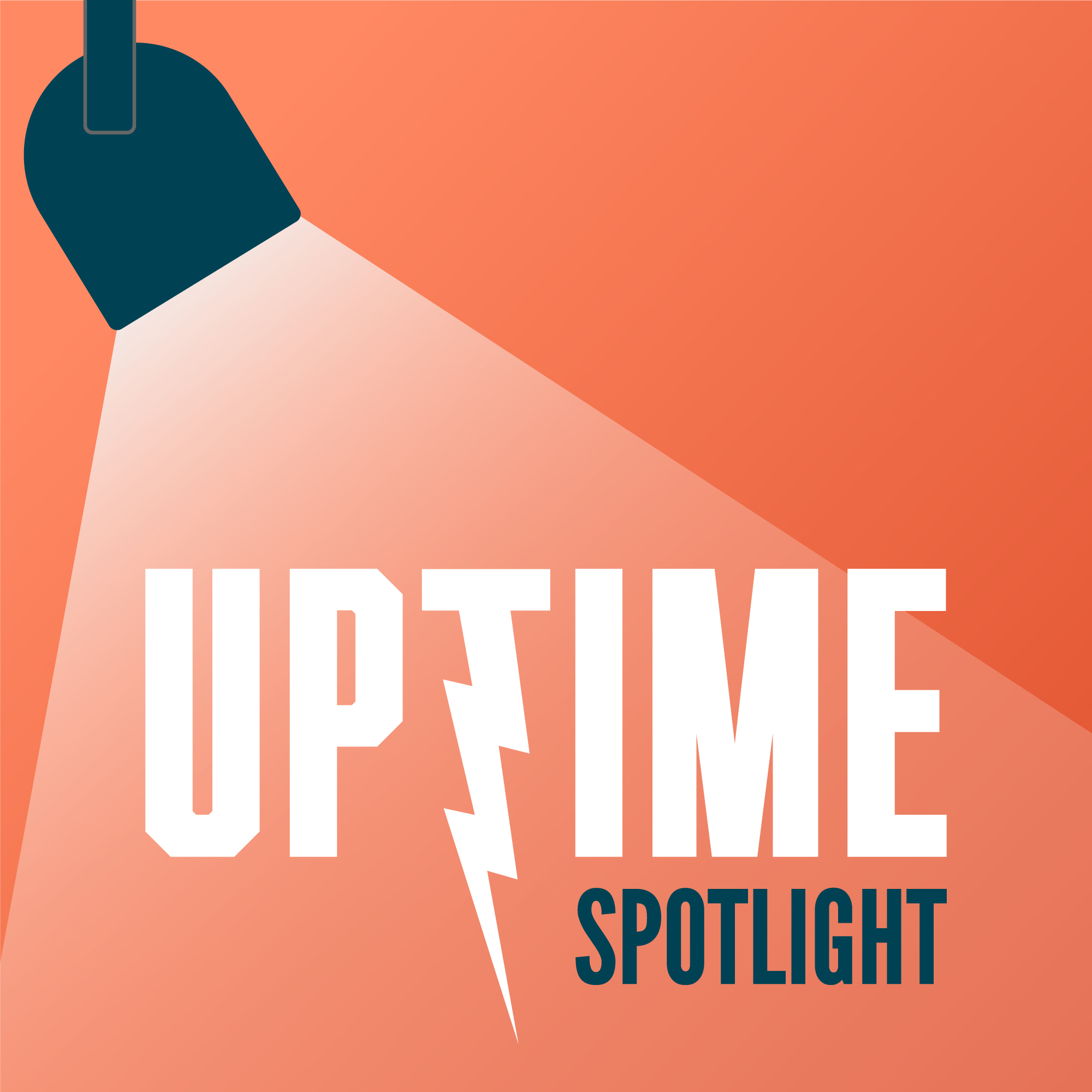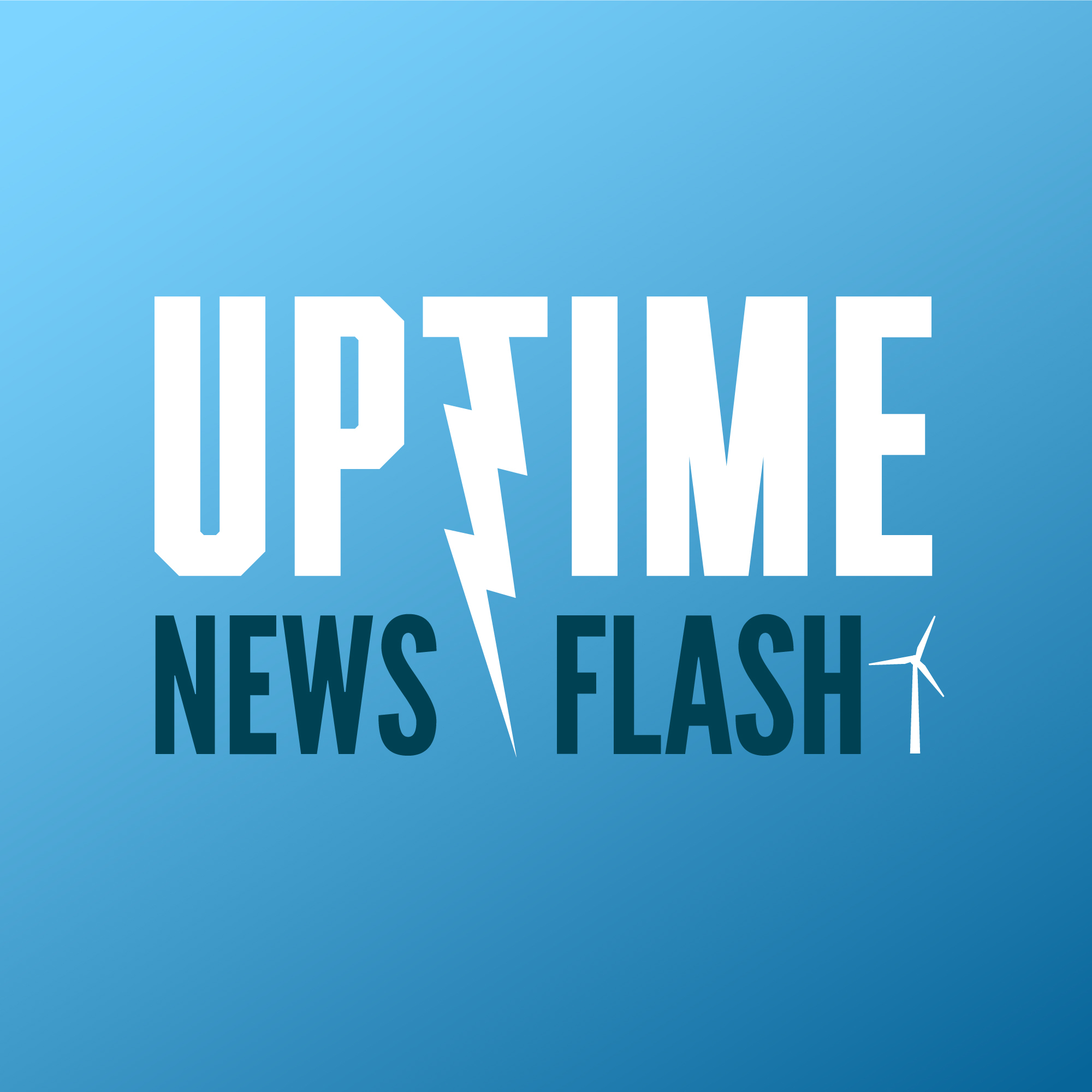Sensing360’s Fiber Optics Catch Gearbox Failures Early
Description
Eric van Genuchten, COO and Co-founder of Sensing360, explains how fiber optic technology is changing gearbox monitoring by catching failures that standard vibration sensors miss. The company’s system uses light-based sensors mounted directly onto planetary gearboxes to measure tiny steel deformations and load changes, providing early warning for the 10% of catastrophic failures current monitoring can’t detect.
Sign up now for Uptime Tech News, our weekly email update on all things wind technology. This episode is sponsored by Weather Guard Lightning Tech. Learn more about Weather Guard’s StrikeTape Wind Turbine LPS retrofit. Follow the show on Facebook, YouTube, Twitter, Linkedin and visit Weather Guard on the web. And subscribe to Rosemary Barnes’ YouTube channel here. Have a question we can answer on the show? Email us!
Welcome to Uptime Spotlight, shining light on wind. Energy’s brightest innovators. This is the Progress Powering. Tomorrow
I am here with Eric van Genuchten. Uh, so Eric is the COO and Co-founder of Sensing 360. Um, and they are bringing optics, um, to monitoring for gearbox, other rotational equipment. Uh, we’re gonna talk a little bit about what that means for the wind industry today, implementation retrofits, uh, from the factory, all kinds of good stuff.
So, Eric, can you give us a little bit of a, of your background? What’s, what makes you an expert in the space?
Eric van Genuchten: Uh, that’s a good question. So basically my background is. Uh, I studied physics when I was much younger than I’m now, so, uh, I’m not gonna disclose when, but, uh, I’ve been working since roughly 20 years and I have a background in SKF in the [00:01:00 ] bearing, uh, uh, manufacturing space.
And basically I’ve been working within SKF as condition monitoring, uh, solution developer. So I’ve been in condition monitoring for almost 15 years now. And from SKF, where we developed, uh, condition monitoring systems for all kind of applications, but also wind of course, we went towards, um, load sensing of barrens to be very specific to help our large customers.
And for that we used, uh, fiber sensing. And, uh, eight years ago, seven and a half years ago, uh, I started with two colleagues. I started sensing 360. Which is the 360 is of course the rotation, but we are using five optical sand or optics, uh, for rotating equipment, mainly bearings, large bearings, gear boxes.
And uh, we have been focusing a lot on wind, uh, the last five years, uh, mainly on the planetary gearbox because that’s a challenging part from the rotating, uh, [00:02:00 ] system to monitor. So that’s where we, uh, think we can add some value.
Joel Saxum: So I know like, uh, I, I wanna share this with the users too. Our listeners here too, because I came across your technology man, three, four or five years ago or something, uh, over in Europe.
I, I think it was, we were in Copenhagen, wind, Europe and Copenhagen. Um, and I remember seeing you guys in like the startup space and I walked over and you had like, basically what looked to be, um, a stainless steel bearing race on the, on the table. With your sensor package on it and a live readout. And I looked at it and I went to pick it up and I was like, this is interesting.
And when I picked it up, just my hand on it, I looked at the screen and I could see all the deflections happening on the screen from just me grabbing this. And I mean, it was, I mean, you remember what the product thing there was? It was probably four millimeters thick of stainless steel. Like that’s not, I’m not squishing that thing with my hand, but you could see it.
Eric van Genuchten: Yeah, no, a lot of people checked if we had a camera around it to see if they were mimicking the move. But basically, [00:03:00 ] if you ring about it, it’s, it’s this, this product still, we still have it, it’s still operational. And this is the, the, the type of bearing a small, relatively small one for, for let’s say, um, wind.
But it’s, uh, 22 kilotons of bearing and you can still see the pinching of your arms. So, uh, indeed. And that’s basically what we do. We, we, we integrate our sensors in steel and make, uh, I don’t say stupid steel smart, or if you put it around, we made rotating equipment smarter if you rephrase it vaguely, basically.
Joel Saxum: I like that. I like that. So, um, you know, in the wind industry, if you’re, if you talk about the past, the past was. Uh, when blades were shorter, of course now everybody’s worried about blades, blades, blades. That’s what we hear all the time. But when blades were shorter and more robust, the problem was gear boxes.
It was, what are we doing about this rotating equipment? We’re having failures. This is a, this is a regular thing. Um, we’ve gotten a little bit past that, um, with. Better bearing [00:04:00 ] technology, more iterations of gear boxes, different things of this sort. But there’s still issues out there. Um, and, but this is your mission statement, right?
So can you describe the problem of basically what you guys see in the field and what you’re trying to solve?
Eric van Genuchten: Yeah, so the problem in the field where we see gearbox specific and also what has been accomplished with several OEMs, because we, we like to work with customers because that basically brings the real problems outside is, is still.
And it’s, it’s valid for all slowly rotating equipment, but it’s still, uh, if it’s slowly rotating, there’s a lot, a lot of energy to do the classical, more classical vibration monitoring. So you have a challenge to predict failures, and that’s what we are still, uh, focusing on eliminating failure. So let’s say in a bare main bearing, they get 99% of the failures by vibration monitoring.
In the high speed shop bearing, they get the same amount, but in the. Gear In the gearbox, they get 90%, so there’s still 10% of fillers they cannot detect. And [00:05:00 ] planetary gearbox fillers are pretty catastrophic. They are, let’s say, huge replacements, cranes downtime. So, um, yeah, we, we want to predict it better.
And secondly, um. Like all rotating parts basically. Do you translate the rotation to It’s the fixed world and it’s, it’s as we say, I used to say the bearing is not, the victim is not the cause, but the victim of a failure. Um, it is, you can derive almost all your running conditions from that single point of, uh, measurement.
So operation conditions, misbalance unbalance where, so you can make predictions about, this is my. Yeah, statement prediction about this is the drive line. And of course, as you mentioned, a wind turbine is not only a drive line, the weakest link kind of defines the total life, but the drive line is an essential part of it.
Uh, so it’s still a complex system to monitor. It currents [00:06:00 ] current vibration monitoring, and we, we add basically load and strain sensing towards it. Therefore we do better predictions.
Joel Saxum: Yeah, because I mean, the answer here is, or the, the, what we’re trying to arrive at is we want to have early prediction of what would be a failure, right?
Because we want the up tower repair. We want the 20, 30, 40, $50,000 repair versus the. 300,000, $400,000 repair where you’re replacing gear boxes or planetary or all kinds of things of that sort. Um, so the tech, the technology that you guys have, of course you’re using fiber optics, which we can, you can arrive at, uh, a much more finite measurement.
Can you explain how that works? I guess let’s take the first, the, the, the first side of it. Let’s explain how it works, if it’s integrated, say from an OEM standpoint. Yeah.
Eric van Genuchten: So
Joel Saxum: if it’s
Eric van Genuchten: integrated from an OE EM standpoint, and we’re working with two. Two of them, and there’s not that many. So basically when you integrate it, you put it directly on the outside of the, the ring gear, so the freely accessible site, uh, [00:07:00 ] uh, part of the system, and it’s directly put on the outside.
And as you mentioned, you can integrate more very sensitive sensors. And due to the fact that you have more sensors and that they’re so sensitive, you can distinguish between temperature, uh, loading, uh, misbalance, so you have more information than just one. Basic string gauge. Uh, so we integrated on the outside.
Then basically when the planets are rolling, so you have the planets and you have the sun, the planets are rotating. It presses basically the steel way. And we measure that. And that measurement can be done, integrated at the OEM. And then, uh, you get a, a smart gearbox basically, which measures, uh, torque and load sharing and used for prediction, even as you mentioned.
To prevent the, the, the, the small opt tower repairs or to actually to prevent the big non-op tower repairs, but do the small opt towers, repairs, and even winning time if you have to replace it anyways, the whole logistics saves a lot of money and time if you know it six months upfront instead of two [00:08:00 ] weeks.
Joel Saxum:<







